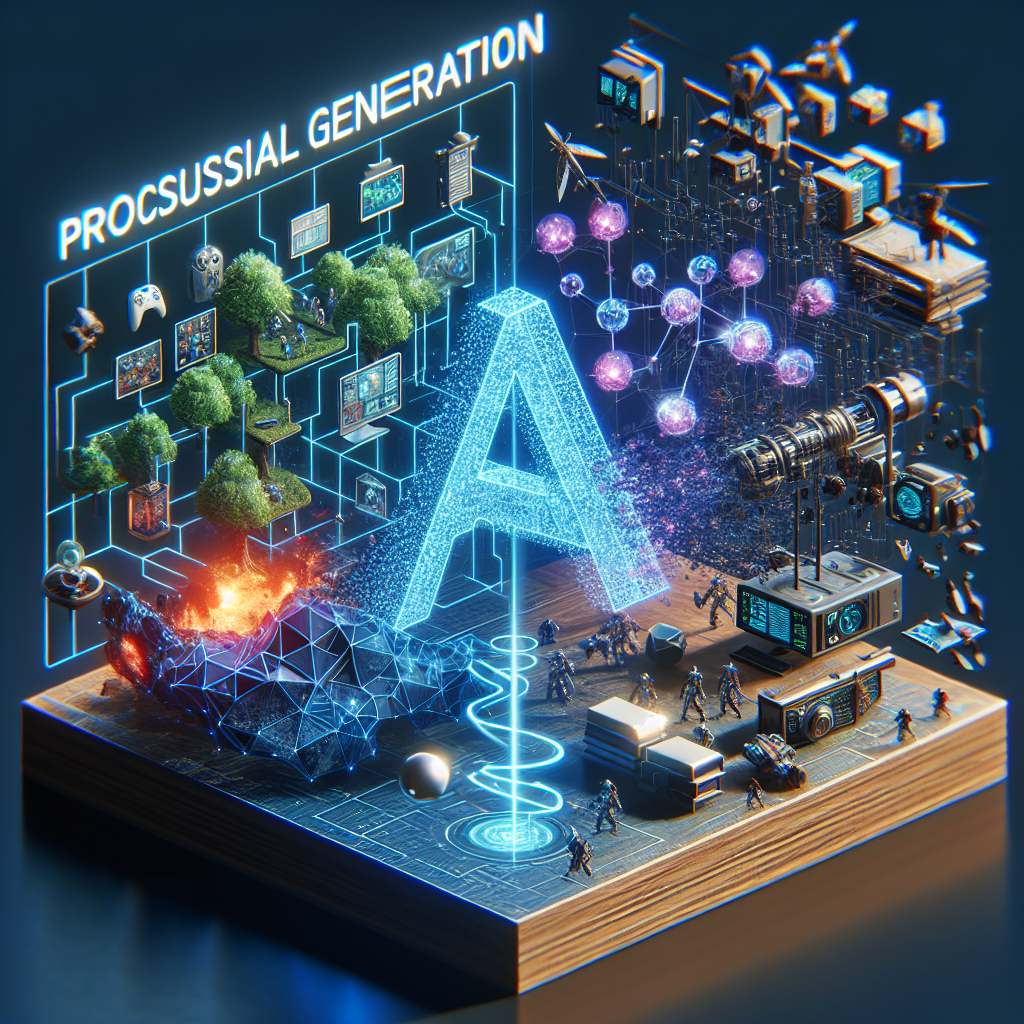Over the past few years, the gaming industry has seen a significant shift towards the use of artificial intelligence (AI) in the creation of procedurally generated game content. This technology has revolutionized the way games are developed and played, allowing for more dynamic and unique experiences for players. In this article, we will explore the role of AI in the creation of procedurally generated game content and its impact on the gaming industry.
What is Procedurally Generated Game Content?
Procedurally generated game content refers to content that is created algorithmically rather than being hand-crafted by developers. This can include everything from levels and environments to characters, items, and quests. By using algorithms to generate content, developers can create vast and varied game worlds that are different every time a player enters them.
AI and Procedurally Generated Game Content
AI plays a crucial role in the creation of procedurally generated game content. By using machine learning algorithms, developers can train AI models to generate content that is both unique and engaging for players. These models can learn from existing game data and player interactions to create content that is tailored to each player’s preferences and play style.
One of the key advantages of using AI in the creation of procedurally generated game content is its ability to adapt and evolve over time. As players interact with the game world, AI can learn from their behavior and preferences to generate content that is more challenging, engaging, and personalized. This can lead to a more immersive and dynamic gaming experience for players, as the game world constantly evolves to meet their needs.
Another benefit of using AI in the creation of procedurally generated game content is its ability to create content at scale. By automating the content generation process, developers can create vast and varied game worlds without the need for manual intervention. This can help to reduce development time and costs, allowing developers to focus on other aspects of game development.
AI can also help to improve the quality of procedurally generated game content. By using machine learning algorithms, developers can train AI models to generate content that is visually stunning, thematically consistent, and balanced in terms of difficulty. This can help to create a more cohesive and enjoyable gaming experience for players, as the game world feels more immersive and well-crafted.
Challenges and Limitations
While AI has revolutionized the creation of procedurally generated game content, it also comes with its own set of challenges and limitations. One of the main challenges is ensuring that the AI models are trained on a diverse and representative dataset. This can help to prevent bias and ensure that the generated content is fair and balanced for all players.
Another challenge is ensuring that the AI models are able to generate content that is both challenging and enjoyable for players. This can be difficult, as players have different preferences and play styles. Developers must carefully tune the AI models to create content that is engaging for a wide range of players.
There are also limitations to what AI can achieve in the creation of procedurally generated game content. While AI can generate content that is visually stunning and thematically consistent, it may struggle to create content that is truly original and innovative. Developers must strike a balance between using AI to create content that is familiar and comfortable for players, while also introducing new and exciting elements to keep players engaged.
FAQs
Q: How does AI generate procedurally generated game content?
A: AI generates procedurally generated game content by using machine learning algorithms to learn from existing game data and player interactions. This allows AI to create content that is unique, engaging, and personalized for each player.
Q: What are the benefits of using AI in the creation of procedurally generated game content?
A: The benefits of using AI in the creation of procedurally generated game content include the ability to create content at scale, adapt and evolve over time, improve content quality, and reduce development time and costs.
Q: What are the challenges and limitations of using AI in the creation of procedurally generated game content?
A: The challenges of using AI in the creation of procedurally generated game content include ensuring that the AI models are trained on a diverse dataset, creating content that is challenging and enjoyable for players, and striking a balance between familiarity and innovation.
In conclusion, AI has revolutionized the creation of procedurally generated game content, allowing developers to create vast and varied game worlds that are unique and engaging for players. By using machine learning algorithms, developers can train AI models to generate content that is tailored to each player’s preferences and play style. While there are challenges and limitations to using AI in the creation of procedurally generated game content, the benefits far outweigh the drawbacks, leading to a more immersive and dynamic gaming experience for players.

